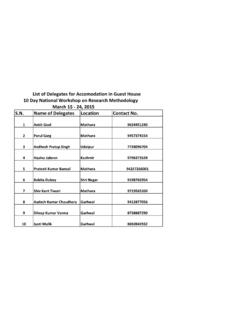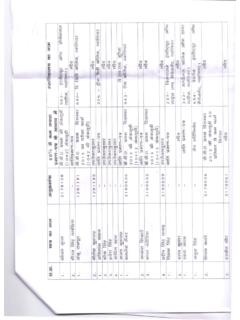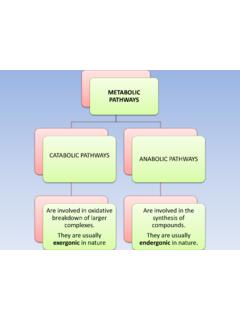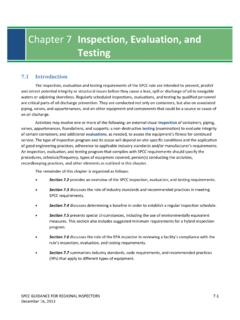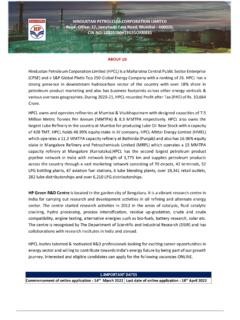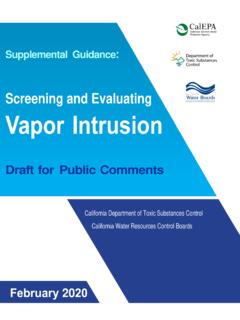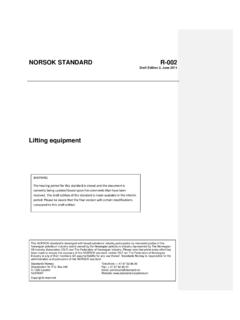Transcription of EVALUATION OF CRUDE DRUGS - Jiwaji University
1 EVALUATION OF CRUDE DRUGS EVALUATION of a drug ensure the identity of a drug and determines the quality and purity of DRUGS . The main reasons behind the need for EVALUATION of CRUDE DRUGS are biochemical variation in the drug, effect of treatment and storage of DRUGS , and the adulterations and substitutions. 1)Organoleptic EVALUATION 2)Microscopical EVALUATION 3) Chemical EVALUATION 4)Physical EVALUATION 5)Biological EVALUATION Organoleptic EVALUATION - Organoleptic EVALUATION means the study of DRUGS using organs of senses. It refers to the methods of analysis like colour, odour, taste, size, shape and special features, such as touch, texture, etc. Obviously, the initial sight of the plant or extract is so specific that it tends to identify itself. If this is not enough, perhaps the plant or extract has a characteristic odour or taste.
2 The study of form of a CRUDE drug is morphology while description of the form is morphography. Eg. The fractured surfaces in cinchona, quillaia and cascara barks and quassia wood are important characteristics. Aromatic odour of umbelliferous fruits and sweet taste of liquorice. The wavy shape of rauwolfia, pungent taste of capsicum and ginger, brown colour of cinnamon, odour and taste of spice- DRUGS like, asafoetida, black pepper, nutmeg, caraway, cumin etc. are important diagnostic organoleptic characteristics. Microscopic EVALUATION - This method allows more detailed examination of a drug and it can be used to identify the organised DRUGS by their known histological characters. It is mostly used for qualitative EVALUATION of organised CRUDE DRUGS in entire and powdered forms. Every plant possesses a characteristic tissue feature.
3 Microscope can be used to confirm the structural details of the DRUGS from plant origin. For the effective results, various reagents or stains can be used to distinguish cellular structure. A drop of phloroglucinol and concentrated hydrochloric acid give red stain with lignin. Mucilage is stained pink with rhuthenium red and also, when treated with corallin soda and few drops of sodium carbonate solution, cellulose swells and dissolves in cuoxam, while N/50 iodine solution stains starch and hemicellulose blue. Eg. Lignified trichomes in nux vomica, warty trichomes of senna, wavy medullary rays of cascara bark, glandular trichomes of mint etc. The powdered cloves do not contain sclereids or calcium oxalate crystals, but both of them are present in powdered clove stalks. The techniques like microscopic linear measurements, determination of leaf constants and quantitative microscopic are also used in this EVALUATION .
4 Linear measurements include size of starch grains, length and width of fibres, trichomes,etc. Determination of leaf constants include stomatal number, stomatal index, vein islet, veinlet termination number and palisade ratios. Stomatal number is average number of stomata per sq. mm of epidermis of the leaf. Stomatal index: it is the percentage which the numbers of stomata form to the total number of epidermal cells, each stoma being counted as one cell. Stomatal index can be calculated by using the following formula: Stomatal index( )= S/(E+S) 100 Where, S=Number of stomata per unit area E= Number of epidermal cells in the same unit area. Timmerman (1927) and Rowson (1943) were amongst the first few to investigate leaf DRUGS for stomatal number and stomatal index. Vein-islet number It is defined as the number of vein islet per of the leaf surface midway between the midrib and the margin.
5 It is a constant for a given species of the plant and is used as a characteristic for the identification of the allied species. Levin in 1929 determined vein islet numbers of several dicot leaves. Veinlet termination number- It is defined as the number of veinlet termination per sq. mm of the leaf surface midway between midrib and margin. A termination is the ultimate free termination of veinlet. Hall and Melville in 1951 determined veinlet termination number of distinguishing between Indian and Alexandrian senna. Palisade ratio-It is defined as the average number of palisade cells beneath each epidermal cell. Unlike vein-islet number for the determination of which an unbroken portion of the leaf is required, palisade ratio can be determined with the powdered drug. The technique of palisade ratio determination was introduced by Zorning and Weiss(1925) in their studies on compositae.
6 Eg. Vein-islet number of Alexandrian senna is , where Indian senna is Stomatal index of Alexandrian senna is 10-15,whereas that of Indian senna is 14-20. Quantitative microscopy (Lycopodium spore method)- This is an important technique employed in identification of CRUDE drug when chemical and physical methods are inapplicable. It is inexpensive technique with official status. Lycopodium spores are very characteristic in shape and appearense and exceptionally uniform in size(25 m). on an average ,94,000 spores per mg of powdered lycopodium are present. A powdered drug is evaluated by this technique,nif it contains 1) Well defined particles which may be counted, grains or pollen grains 2) Single layered cells or tissue, the area of which may be traced under suitable magnification and actual area calculated 3) The objects of uniform thickness, the length of which can be measured under suitable magnification and actualarea calculated.
7 The percentage purity of an authentic powdered ginger is calculated using the following equation N W 94000 100=%purity S M P Where, N= number of characteristic structures( grains) in 26 field W= weight in mg of lycopodium taken S=number of lycopodium spores in the same 25 fields M=weight in mg of the sample, calculated on basis of sample dried at 105oC P=2,86,000 in case of ginger starch grains powder. Lycopodium spore method can be used for the EVALUATION of powdered clove, ginger, cardamom, nutmeg, umbelliferous fruits etc. Chemical EVALUATION - The chemical EVALUATION includes qualitative chemical tests, quantitative chemical tests, chemical assays and instrumental analysis. The isolation, purification and identification of active constituents are chemical methods of EVALUATION .
8 Qualitative chemical tests include identification tests for various phytoconstituents like alkaloids, glycosides, tannins,etc. Eg. Copper acetate used in the detection of colophony present as an adulterant. Van Urk s reagent for ergot Vitali morins reaction for tropane alkaloids Iodine for starch Quantitative chemical tests such as acid value(resins, balsams), saponification value(balsams), ester value (balsams, volatile oils), acetyl value (volatile oils), etc. are also useful in EVALUATION of a drug by means of chemical treatment. Chemical assay include assays for alkaloid, resin, volatile oils, glycoside, vitamins or other constituent. Eg. Assay of total alkaloid in belladonna herb, the total alkaloid and nonphenolic alkaloid in ipecacuanha, the alkaloid strychnine in nux vomica, the resin in jalap and the vitamins in cod -liver oil.
9 The results obtained can conclude the presence of inferior or exhausted drug and, by proving absence of the assayed constituent. Instrumental analyses are used to analyse the chemical groups of phytoconstituents using chromatographic spectroscopic methods. Physical EVALUATION - Physical standards are to be determined for the DRUGS , wherever possible. These are rarely constant for CRUDE DRUGS , but may help in EVALUATION , specifically with reference to moisture content, specific gravity, density, optical rotation, refractive index, melting point, viscosity, and solubility in different solvents. 1) Moisture content- The moisture content of a drug will be responsible for decomposition of CRUDE DRUGS either producing chemical change or microbial growth. So, the moisture content of a drug should be determined and controlled.
10 The moisture content is determined by heating a drug at 105oc in an oven to a constant weight. Eg. The moisture content of digitalis and ergot should not be more than 5%W/W, respectively. 2) solubility- Drug specific behaviour towards solvents are taken into consideration. Eg. Solubility of colophony of colophony in light petroleum, the solubility of balsam of Peru in solution of chloral hydrate 3) optical rotation- Anisotropic crystalline solids and samples containing an excess of one enantiomer of a chiral molecule can rotate the orientation of plane-polarized light. Such substances are said to be optically active, and this property is known as optical rotation. Eg. Eucalyptus oil (0oc to +10oc), honey (+3oc to -15oc) 4) Refractive index- It is defined as the property of a material that changes the speed of light, computed as the ratio of the speed of light in a vacuum to the speed of light through the material.


